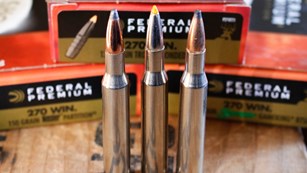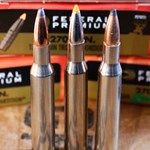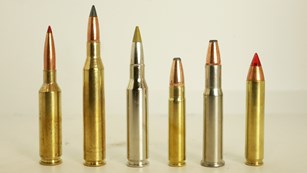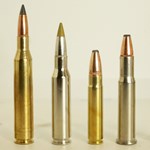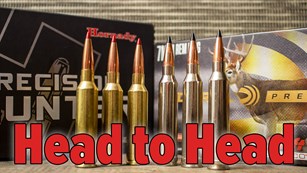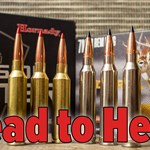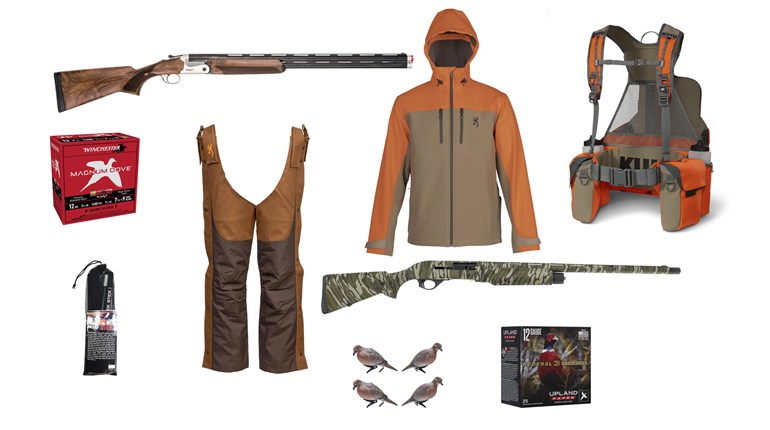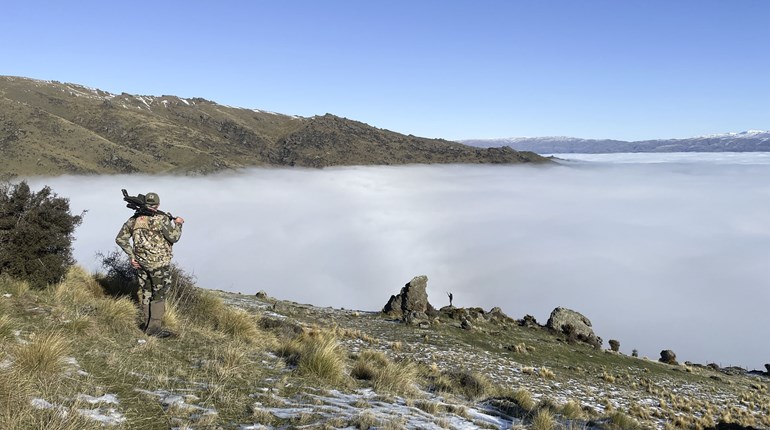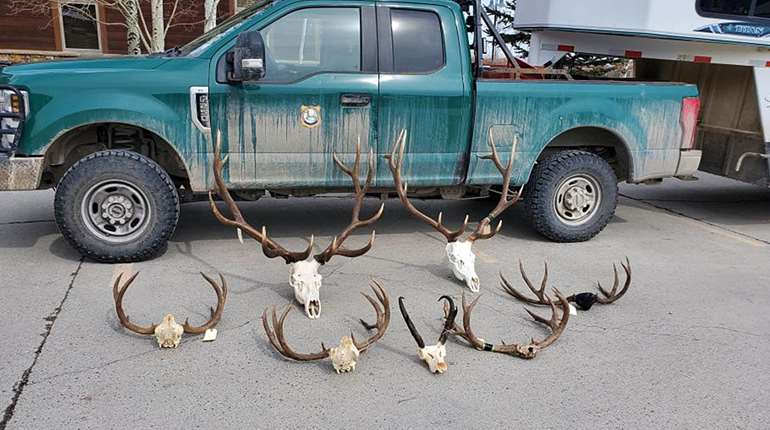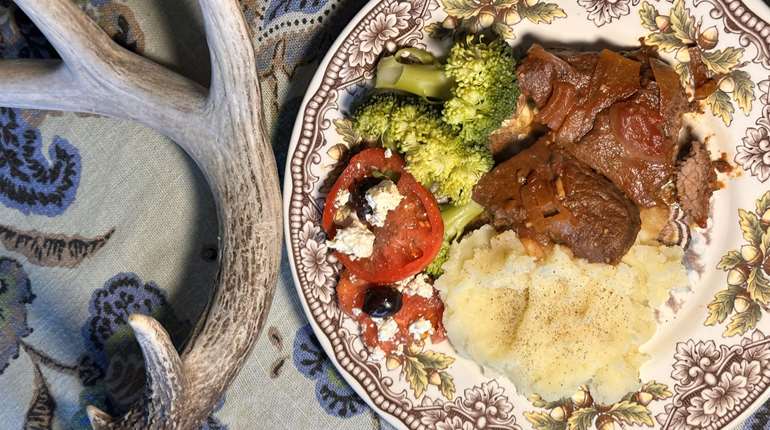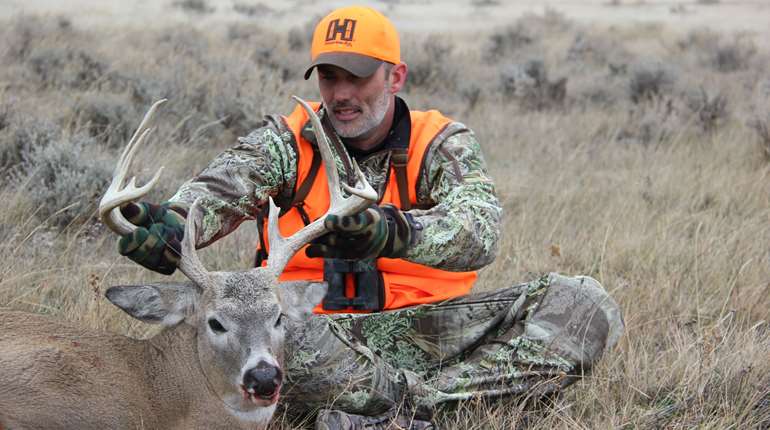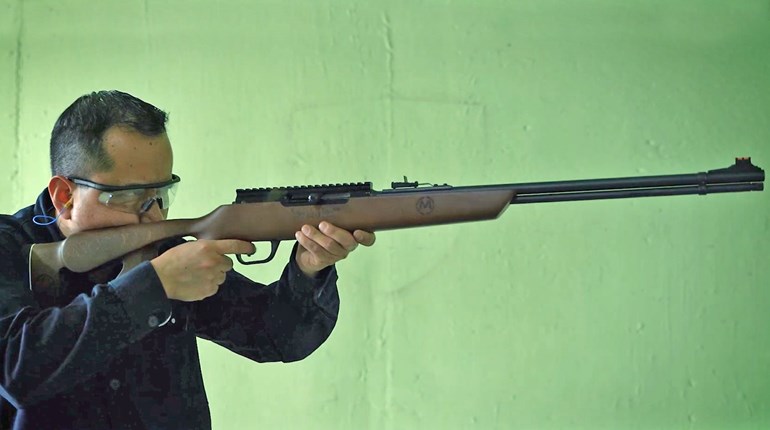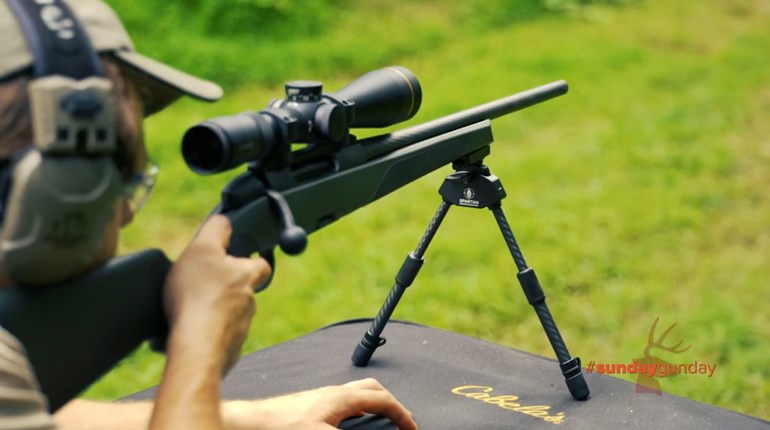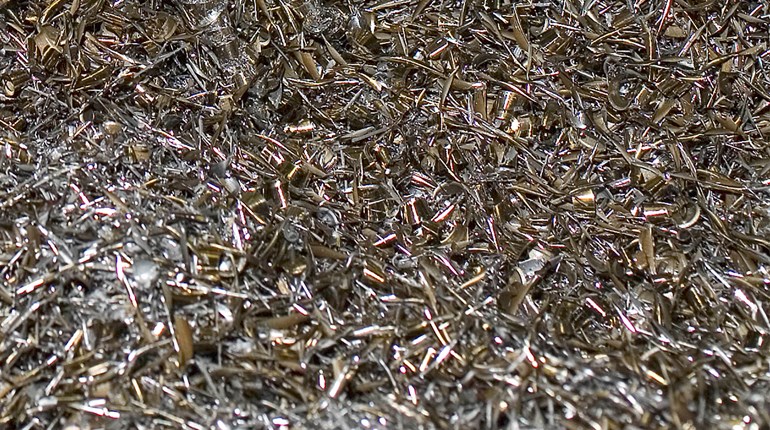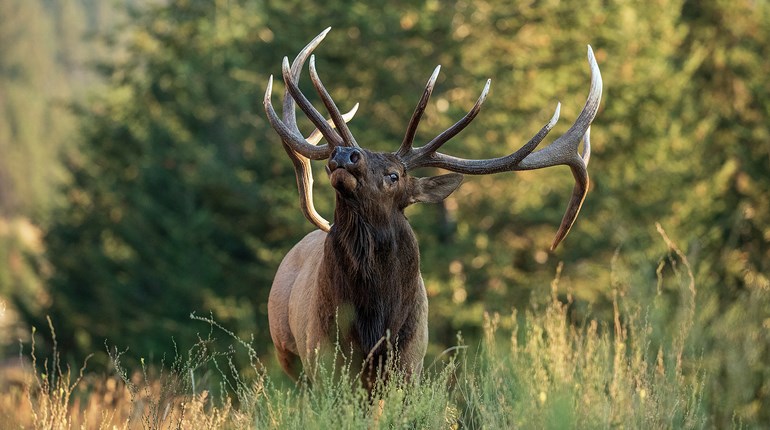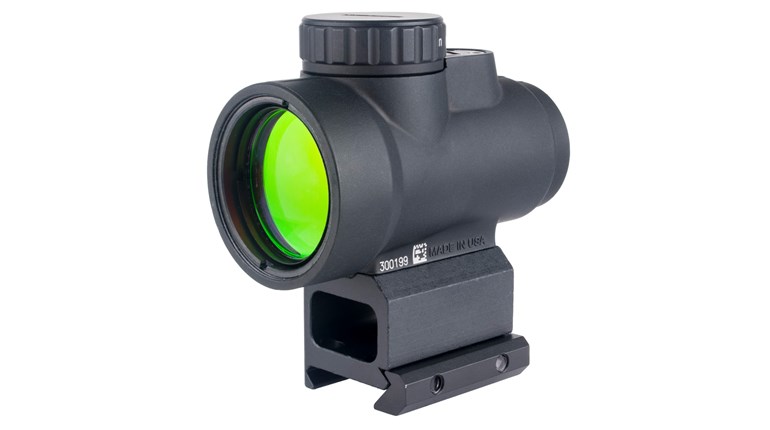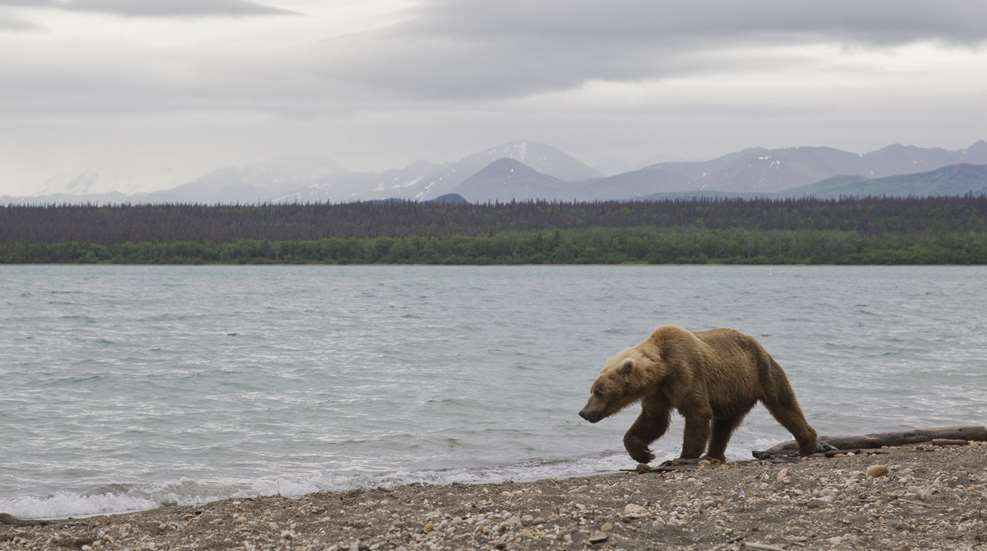
I was told to bring rain gear. What I should have done was bring rain gear to wear over top a dry suit, and a poncho to go over them both—an umbrella wouldn’t have hurt either. When I say it rained, I mean it was torrential—drops the size of quarters, relentless, painful at times and for about four days straight right smack in the middle of our six-day hunt. There was no fighting it, we were going to get wet on this one. To the Alaska guides used to the early May weather on Baranof Island, this was just another day in paradise. For me, my hunting partner, Jason Nash, and the rest of the Lower 48, this was the type of weather that would normally keep us indoors, glued to the forecast with our faces pressed against the windows watching and waiting for the clouds to break. But alas, an opportunity for coastal brown bears doesn’t come around but perhaps once in a lifetime, so when the forecast says steady downpour, you put on your big-boy pants and simply come to terms with getting wet. Even better, you bring the right gear.
 Along with the torrential rain came a thick fog that poured into the tight coves of Baranof Island. Glassing became a game of finding an open sightline.
Along with the torrential rain came a thick fog that poured into the tight coves of Baranof Island. Glassing became a game of finding an open sightline.
Hunting by boat didn’t help the situation. Rain coming from above is one thing, mixing it with the spray from a fast boat ride on choppy water is another thing altogether. Baranof Island gave us all of it. To quote Forrest Gump: “We been through every kind of rain there is. Little bitty stingin’ rain ... and big ol’ fat rain. Rain that flew in sideways. And sometimes rain even seemed to come straight up from underneath.” As it turned out, my packable rain gear wasn’t cutting it. With the layers required to stay warm in the Southeast Alaska climate, it was a snug and uncomfortable fit to say the least. But the coat wasn’t long enough anyway, and the water running down my backside found an easy route to my waistband. By the end of the first day it became blatantly obvious why my guide, Dylan Baca, was wearing gear more suited to duck hunting, complete with chest waders and a warm, waterproof parka. I was determined to make do, though, so the following day I ditched the packable rain jacket, tightened my hip waders, threw the rain pants over top of them and borrowed a full-length green rubber slicker from Captain Parker. It was his spare, an old Helly Hansen that had seen its fair share of Alaska and now lacked a button or two and the cinch cord in its hood, but it was much better than what I’d had previously, and it kept me dry—mostly. I was more than thankful, albeit a bit embarrassed to have to ask for it in the first place.
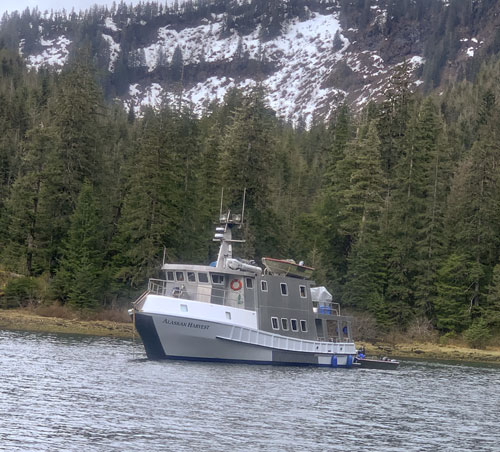
To get to Baranof we’d taken a float plane from Juneau and lucked out to get in the air just ahead of the approaching storm. The flight time was only a few short hours, and thank God the weather hadn’t arrived yet because it was relatively smooth sailing through light rain—a scenic trip to be sure. We flew south, hugging the western coastline of Admiralty Island, eyes plastered to the small windows hoping to catch a glimpse of a beachside bear, until we crossed the open water of the Chatham Strait and entered Baranof’s Kelp Bay. There, below in the distance, unmoving in the Kelp’s deep blue waters sat our home for the week, the beautiful Alaskan Harvest. The flagship vessel of Parker Guide Service, the custom 80-foot Alaskan Harvest was purchased and meticulously refurbished by Captain Bruce Parker years ago, specifically to house hunters and adventure seekers in these waters. Comfortable is an understatement. I’ve hunted from boats in Alaska before, but none of those vessels had what it takes to be called a yacht. This was a yacht, providing luxury you wouldn’t expect to find in such a remote corner of the world, complete with a beautiful interior, private cabins with bathrooms and an amazing chef named Stacie Miller. From the large galley, Stacie crafted delicious three-course meals, packed our custom lunches to go and always had fresh coffee, snacks and smoked salmon at the ready. Behind the Alaskan Harvest was tied three, 16-foot aluminum boats. These skiffs would act as our tenders for the week, transporting hunters and guides to various coves and inlets in search of brown bears. Being the month of May, there was still snow up high, meaning that to fill their bellies these bears would need to hit the shoreline where the spring grasses grew. That’s where we’d focus our search. With decent glass we could see the peaks, where our guide’s eyes could point out the many trails left by bears trudging through the deep snow above the tree line. The forest was thick from there down to the beach, an old growth deciduous rainforest full of well-worn trails, the pathways used by brown bears for generations. In there it was darkness, cold and quiet, beautiful and lush, and deceivingly calm—enter if you dare. Luckily for hunters, the grass flats drew the big boars down and out—grass flats and sows, that is. It was the beginning of mating season, so though we were looking for big boars, a smaller female on the beach was not to be ignored as a big male could be hot on her tail. Playing the wind was going to be paramount to success. That, and withstanding the storms on the horizon. We were in for an adventure, that’s for sure. How it would all turn out in the end was anyone’s guess but glassing from the galley of the Alaskan Harvest and spotting the first bears of the trip high above the tree line, those distant dark spots slowly making their way across a white mountain peak gave me high hopes.
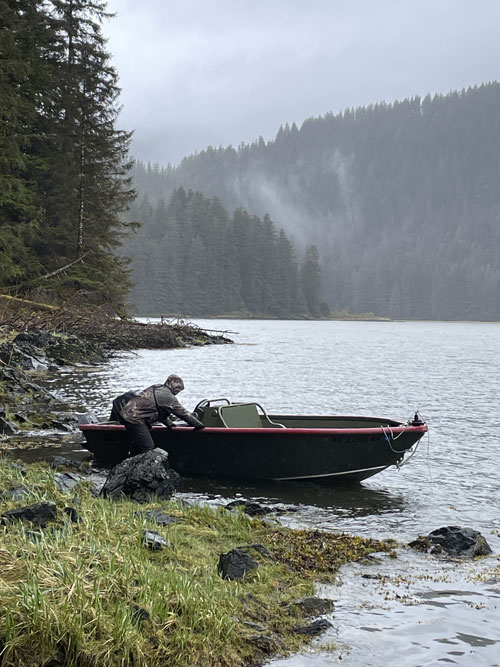
Jason and I would split up on this one to increase the odds of success, and I set out in the skiff with Dylan the next morning, my pack filled with a day’s worth of snacks and inadequate rain gear. There was a steady drizzle coming down, but the weather report indicated we were still one day out from the bad stuff, but it was headed our way, no doubt. We had pulled the Middle Arm of Kelp Bay, a 5.5-mile stretch of water about a half-mile wide that ended at a secluded tidal flat where a freshwater creek, fed from snow melt up above, split into two distinct channels as it spilled into the bay. The back of that flat was a lush green grass bed, a likely place to find bears. But we’d take our time getting there, beaching the boat at various points along the way that provided good views of a few smaller shoreside sections of beach grass. It was a fairly patient experience, sitting and glassing across the water at a 50-yard stretch of grass, but hearing over the radio of a missed shot from a third hunter we were sharing the boat with was enough to keep my engine revved and my heart rate in the red for the remainder of the day. By the time the skiff was tied up behind the Alaskan Harvest just before dinner, the real rains had found us. And they wouldn’t let up for the next three days.
The events of the week are really all kind of a blur, a wet and soggy blur intertwined with both heartache and jubilation. Dylan and I kept at it, braving the wind and rain while venturing to different areas in search of our bear. Crossing some big open water, we spent the afternoon of the second day camped out on a small island in Kelp Bay that offered a view of a distant shoreline and a few grass beds. It was a nice little spot to hole up, and tucked up under the canopy of the ancient trees it even offered some reprieve from the downpour. We did our best to stay vigilant—and dry—but hours on that small island had their effect on me and I eventually couldn’t sit still any longer. It took maybe 30 minutes to circumnavigate the island, but when I returned from my walkabout I had a small Sitka blacktail shed in my possession. I wondered aloud how it arrived on this island, and Dylan explained that the whole bay freezes over in winter, and deer often cross the ice in search of food and females, some even finding themselves stranded once the ice recedes. I wondered if bears did the same, and made sure to check over my shoulder for a starving marooner the rest of the afternoon.
The following day we headed up the Middle Arm again, and though we spotted a big brown bear on the beach around noon it was only for a moment, and by the time we untied the boat and prepared to move on him he had already disappeared again into the dense wood. We spent the remainder of the day behind the spotting scope, unable to escape the drenching rain, eyes trained high above the tree line watching distant bears in the snow. While I would’ve preferred to watch bears on the beach, the show up high was truly something. What we later determined to be a big boar was following a fleeting sow. Hot on her trail, the boar was relentless in his pursuit, only pausing when she did, and eventually exhausted her efforts. We couldn’t be one hundred percent sure what went on up there, but the pair met and I’m pretty sure we got to witness some distant brown bear hanky panky. It didn’t last long, and there was no cuddling once the deed was done.
By the next afternoon, I was getting a bit worried. We didn’t have many days left, and though I’d seen some bears none of them offered even a chance at a shot. Once the weather let up a bit, Dylan and I traveled to the North Arm, where the bear had been missed a few days prior, and though it was a beautiful place we saw no bears. The rainstorms returned in full force on our trip back, and even with the full-length slicker doing its best my rain gear was no match for the wind and 3-foot swells we needed to push through to get back to the Alaskan Harvest. I was soaked to the bone once we touched the back deck and Dylan hadn’t fared much better; his “waterproof” parka could only repel so much water before being forced to accept its new job as a sponge. Jason and his guide, Dan Cattaneo, however, had a different story to tell upon their return to the Alaskan Harvest. The pair hunted in what we called “Gentleman’s Cove” due to its location sheltered from the storm, and were not only able to stay dry all day, but Jason had taken a gorgeous dark bear from the beach. He’d done it—one big, beautiful bear down. We rejoiced in his success that evening, and I went to sleep with a renewed sense of hope bolstered by a forecast for blue skies the next day.
 Hunter Jason Nash cemented this big chocolate bear with two shots from the .300 RUM at 315 yards.
Hunter Jason Nash cemented this big chocolate bear with two shots from the .300 RUM at 315 yards.
With Jason’s tag filled, we decided to double up, and he, Dylan, Dan and I hopped into the same skiff and pointed the bow toward virgin ground. We’d be putting on some miles, headed out of Kelp Bay and south down Baranof’s eastern coast. We had good omens from the very start, spotting a sow and cub right out of the gate in Kelp Bay and another with two cubs walking a beach a few miles away. The weather was beautiful, the sun’s rays putting distance between us and memories of the previous day’s rain. It was a pleasure cruise, complete with calm waters, good friends and a quickly devoured stash of Stacie’s jalapeno pickled eggs. Like sightseers, we floated into various bays and hidden coves to take in the magnificent views of Baranof Island’s eastern coast. There was the Hidden Falls fish hatchery, the Baranof Wilderness Lodge, a few small eclectic seaside communities and a towering waterfall that threw clouds of shimmering spray like diamond dust off the mountainside. It was a Bob Ross painting around every turn. And of course, there was the magical Takatz Bay, ending in the tight, high-walled and grass-lined canyon of Takatz Creek. The wind wasn’t right when we’d attempted our first entrance, but it was perfect when we returned a few hours later.
High tide allowed us to slowly navigate the skiff toward the back of the cove where cold waters of Takatz Creek spilled into the bay. It was a tight canyon, maybe 400 yards wide at the mouth that got skinnier the deeper in we went. We’d just begun to scan the grass flats when Dylan spotted a bear, a big bear, feeding and completely unaware of our presence. But we’d need to get closer to ensure it was a shooter boar.
Hugging the eastern wall, with the boat’s outboard motor turned down to a crawl, we crept quietly along, eyes glued to the feeding bear. My body was trembling so badly that I could barely keep the bino steady enough to see it, but Dylan, Dan and Jason assured me it wasn’t going anywhere. Locating a huge boulder jutting out from the right-side bank just up ahead, we decided it was a good place to make our stand and nosed the boat in. Dylan and Dan spent a few minutes on the glass to size up the bear, and eventually turned to me with smiles and a thumbs up. It was boar, not the biggest on the island but a big and beautiful bear, no doubt. It was up to me to make the call. We could keep looking, they said, for one slightly bigger, but I didn’t travel nearly 3,000 miles to pass up an opportunity on a legal brown bear and instantly confirmed my desire to set up for the shot. So up onto the boulder we climbed.

Laying prone on the large rock, with the .300 RUM rifle tucked tight into my shoulder, I steadied the crosshairs and waited for Dylan to call the shot. It was about a 265-yard poke, and the bear was still feeding on the tall grass, slightly quartered away from us. With the bear still unaware of our presence and content on the food at hand, I was allowed precious minutes to control my breathing and fully take in the contours of his frame and the beauty of his multicolored coat. It was undoubtedly the largest bear I’d ever seen up close, his giant hump catching the rays of sun above his broad shoulders, and the telltale round rump of a mature boar swaying with each step. There was no way I was passing up this one. He turned completely broadside and Dylan made the call. I breathed, held the crosshairs centered on the bear’s lungs and gently squeezed the trigger.
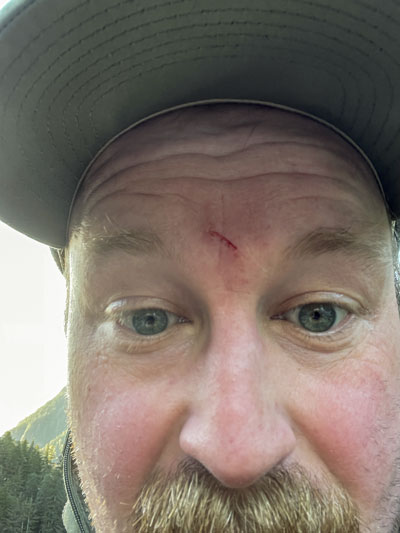
Upon the report the bear spun, and remembering the instruction from a good friend who’d recently shot his own brown bear (“keep shooting until he stops wiggling”) I didn’t hesitate to rack the bolt and put another one into the flailing mass. The shots were fast and accurate, and the bear was down and still by the time the bolt reached the rear of the action a second time. He was dead, but I closed the bolt again anyway and kept my crosshairs trained on the dark hump for another few minutes. When I finally rose from my prone position, unbeknownst to me a small stream of blood was running down my face. I’d “scoped” myself; “Kissed by an angel”, as Dylan put it. The way I looked at it, the bear and I had both drawn blood. Fitting.
Putting my hands on that beast was a transcendental experience. His paws were larger than my face, his claws long er than my fingers. The sheer mass of his head was beyond comparison. His hide was spectacular and unique, much different, I was told, from the average dark brown and long-haired bears shot on the island. Long dark fur covered his legs but transitioned to a shorter, light brown fur atop his back. Thick and full, there wasn’t a rubbed spot on him. His milk-chocolate snout was accentuated by dark cheeks, blending to near blonde atop his head and shoulders. We all stood and admired the bruin, shook hands and relived the adventure before setting to the task of photographs, more than I usually have the patience for, but I didn’t mind one bit, not this time. These were memories I never wanted to fade.
 The author’s bear was unique in its coloration, sporting dark legs and a lighter body. Though its hair was markedly shorter, the cape showed no rubbing.
The author’s bear was unique in its coloration, sporting dark legs and a lighter body. Though its hair was markedly shorter, the cape showed no rubbing.
We returned to the Alaskan Harvest that night with the pride of a job well done and the hide of a beautiful brown bear tucked in the bow. Our jubilation, however, was short lived, as we heard yet another tale of heartache from the other hunter on board. He’d drawn blood this time, but was unable to put another killing round into the bear before it made it to the safety of the woods. Sure that the guides would be able to find it just inside the wood line, we all set out together the following morning to the last known location in support of a fellow hunter. Guarding the beach and the boats, we waited for four long hours, hoping for and yet fearing the sound of a distant gunshot, doing our best to stave off the dark thoughts that accompany such a situation before the guides returned from the deep woods empty-handed. They’d followed blood for miles, up and over the mountain, until the sign ran dry. It was a somber experience, to say the least. But at least Dylan and Dan had returned. The bear would likely survive. Aside from chasing a wounded buff through the African bush, trailing a wounded brown bear through the dark Baranof rainforest was about the most dangerous thing I could ever imagine doing. Still, it was heartbreaking knowing that a fellow hunter was going home with tales of woe rather than success. Such is the game we play.
God gave us one more show the night before we left Baranof Island—the most incredible Northern Lights I’ve ever witnessed. We had to stay up a bit later than usual in order to catch it, but that wasn’t a problem; Jason and I were still high on the events of the week. Hues of deep green, purple, pink and red came in waves across the dark night sky as we watched in silent awe, heads craned on the rear deck. Dark skies and brown bears, the beauty of Alaska shown bright through it all.

Gunning for Brown Bear
I arrived on Baranof with a beautiful .375 H&H Magnum Custom Safari Rifle made by the folks at Hill Country Rifles, topped with a Leupold Mark 4HD 2-10x scope. It’s a rig I practiced with over the course of three months and was more than prepared to use on a big brown bear. With the Federal Safari Swift A-Frame loads I’d selected to run through it, I was shooting lights out at 100 yards and had run drills for the fast work required in a dangerous close encounter. At 100 yards, that combo delivers a 300-grain bonded slug at about 2200 fps, resulting in a game ending 3,200 ft.-lbs. of energy on target. That’s good bear medicine in anyone’s book. federalpremium.com
All that preparation was thrown to the wayside when the opportunity for a shot finally presented itself. I was confident with that setup out to about 200 yards, where bullet drop was a little less than 6 inches, but when we ranged the bear and it looked as though my shot would be from 250-300 yards, our guide Brian offered up his rifle. Brian’s custom Remington rifle was chambered in .300 Rem. Ultra Mag., sighted in to be dead-on at 200 yards. Loaded with Remington’s Premier Scirocco Bonded ammo with 180-grain Swift Scirocco bullets traveling about 3250 fps out of the muzzle, it drops about 5.5 inches at 300. Compared to the 20-inch drop of my .375 H&H at 300 yards, the .300 RUM ballistics seemed the surer option. The .300 RUM was also fitted with a Banish suppressor. The canyon where we found the bear was high-walled and tight, and given the option of holding for a 16- to 20-inch drop and blasting out the eardrums of our entire group with the .375 H&H, or shooting this bear with the flat-shooting and suppressed .300 RUM where I could hold dead-on, I chose the latter—and I’m happy I did. Those Sciroccos did the job well. The first shot was a perfect double-lung, exiting just behind the offside shoulder. The second shot, taken as the bear was rolling and flailing, found an entry just below the neck, centered above the shoulder blades, delivering massive trauma to the spine before exiting the chest. I shot the wiggle out of him, for sure. remington.com
My takeaway: Bring the right gun. Take into account your likely shot distances and equip accordingly. While the .375 H&H was recommended by the outfitter and would have done a fine job were it my only option, I should have pushed for more details on shot distances, and had I, I would have taken something better suited to longer pokes—like the .300 RUM or .300 PRC—and run one of my favorite long-range bullets: Federal’s Terminal Ascent.


